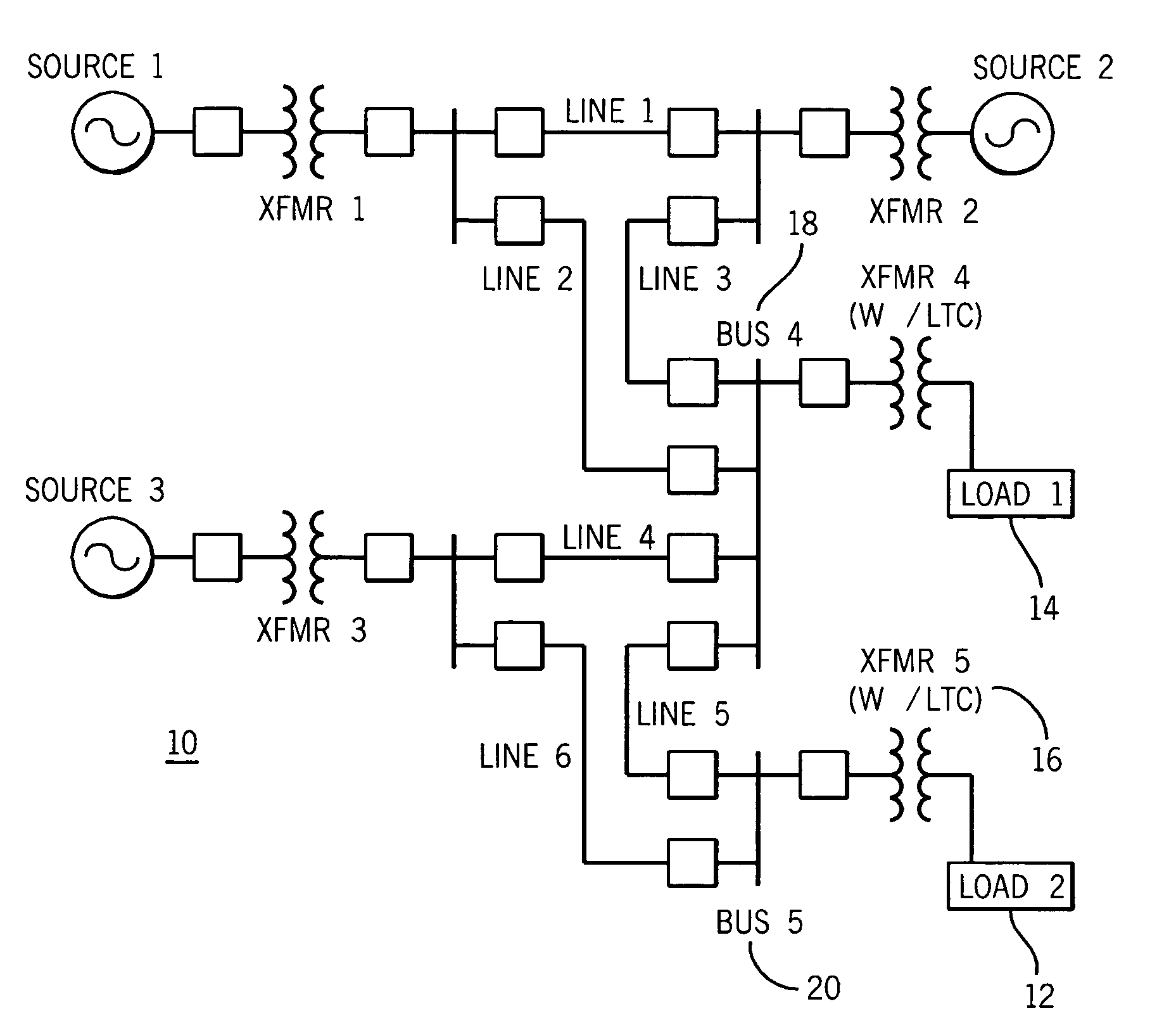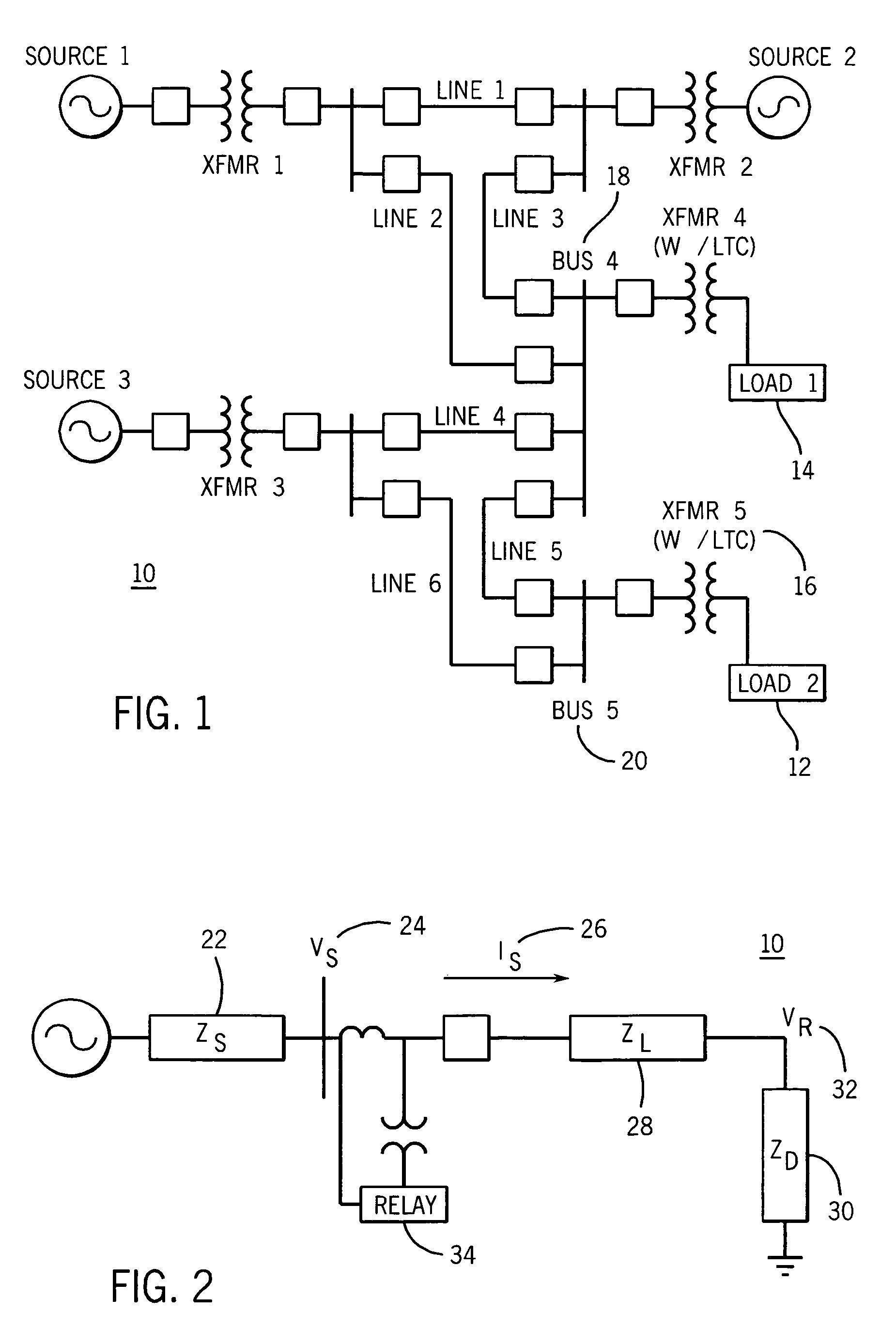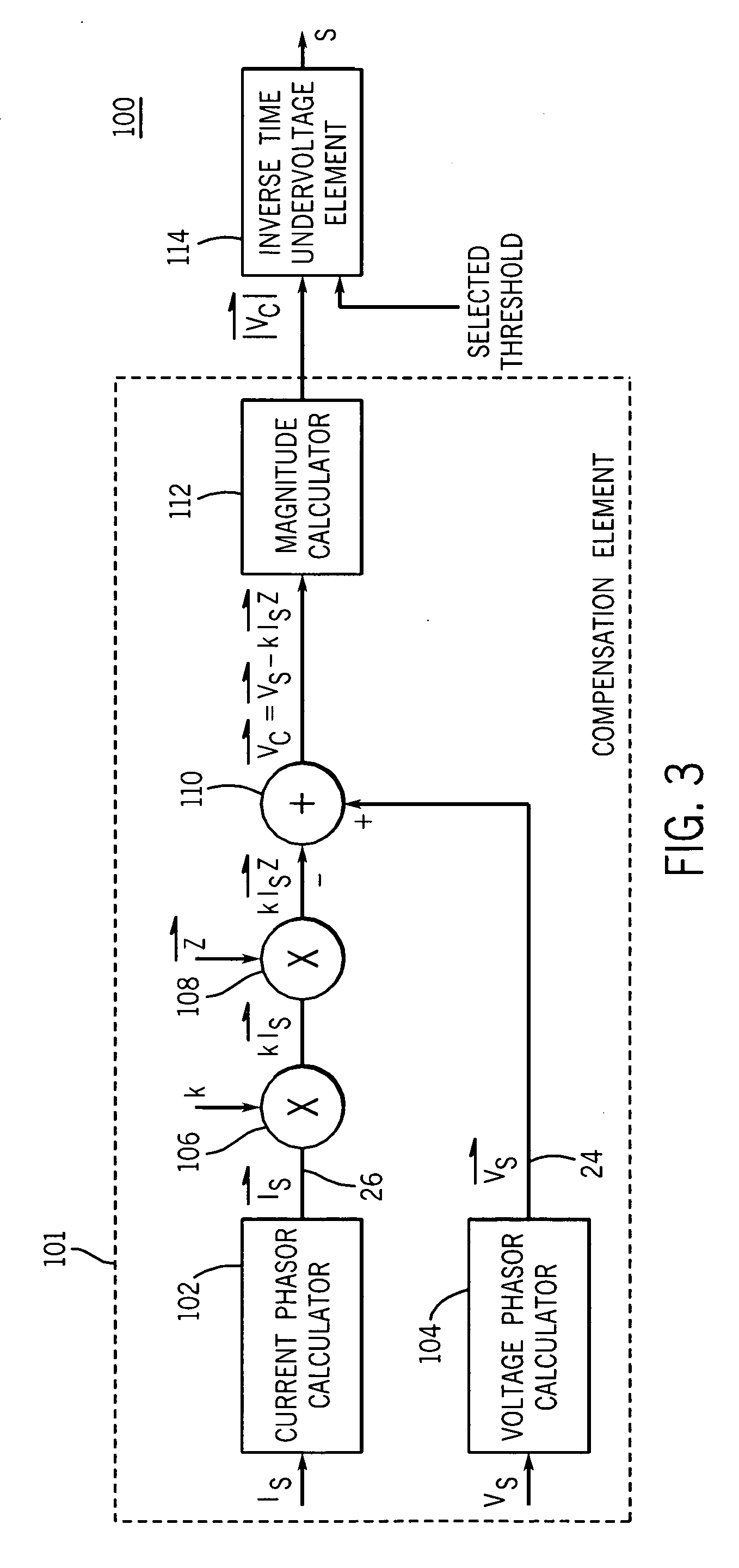Compensated inverse-time undervoltage load shedding systems
a load shedding system and load shedding technology, applied in non-electric variable control, process and machine control, instruments, etc., can solve the problems of heavy power system load that approaches or exceeds the limits of the power system, loss of a var generating source, and decrease of effective transformer turn ratios
- Summary
- Abstract
- Description
- Claims
- Application Information
AI Technical Summary
Benefits of technology
Problems solved by technology
Method used
Image
Examples
Embodiment Construction
[0025] The multiple embodiments of this invention relate to undervoltage load shedding systems including a compensation element and an inverse-time undervoltage element utilized in an electric power system control or protective device for coordinated, system-wide load shedding. Generally, system control or protective devices are used for protecting, monitoring, controlling, metering and / or automating electric power systems and associated transmission lines. These system control or protective devices may include protective relays, RTUs, PLCs, bay controllers, SCADA systems, general computer systems, meters, and any other comparable devices used for protecting, monitoring, controlling, metering and / or automating electric power systems and their associated transmission lines.
[0026] Although embodiments described herein are preferably implemented in protective relays, it is contemplated that the embodiments may also be implemented in any suitable system control or protective devices su...
PUM
 Login to View More
Login to View More Abstract
Description
Claims
Application Information
 Login to View More
Login to View More - R&D
- Intellectual Property
- Life Sciences
- Materials
- Tech Scout
- Unparalleled Data Quality
- Higher Quality Content
- 60% Fewer Hallucinations
Browse by: Latest US Patents, China's latest patents, Technical Efficacy Thesaurus, Application Domain, Technology Topic, Popular Technical Reports.
© 2025 PatSnap. All rights reserved.Legal|Privacy policy|Modern Slavery Act Transparency Statement|Sitemap|About US| Contact US: help@patsnap.com



